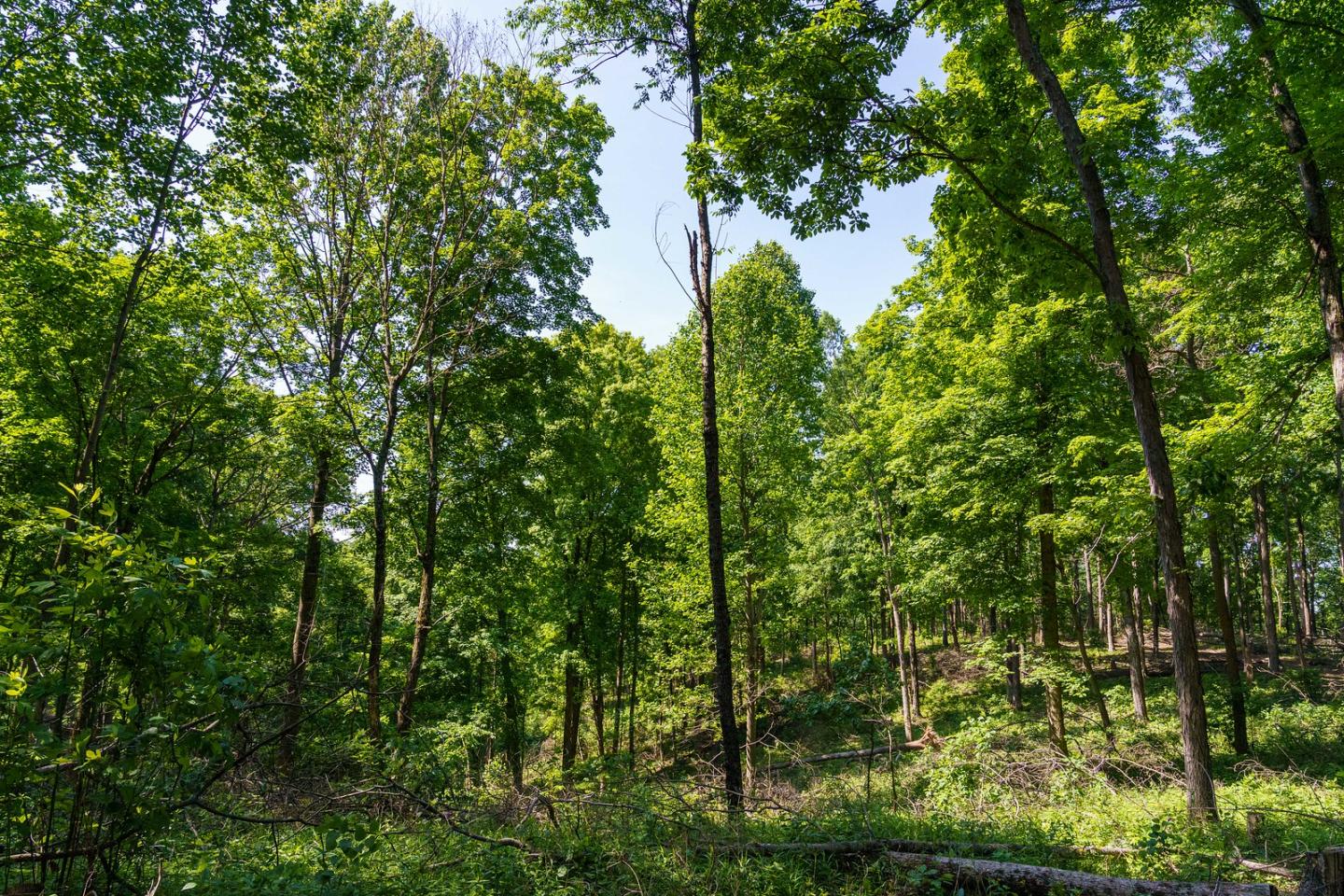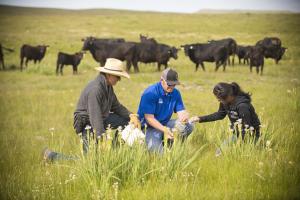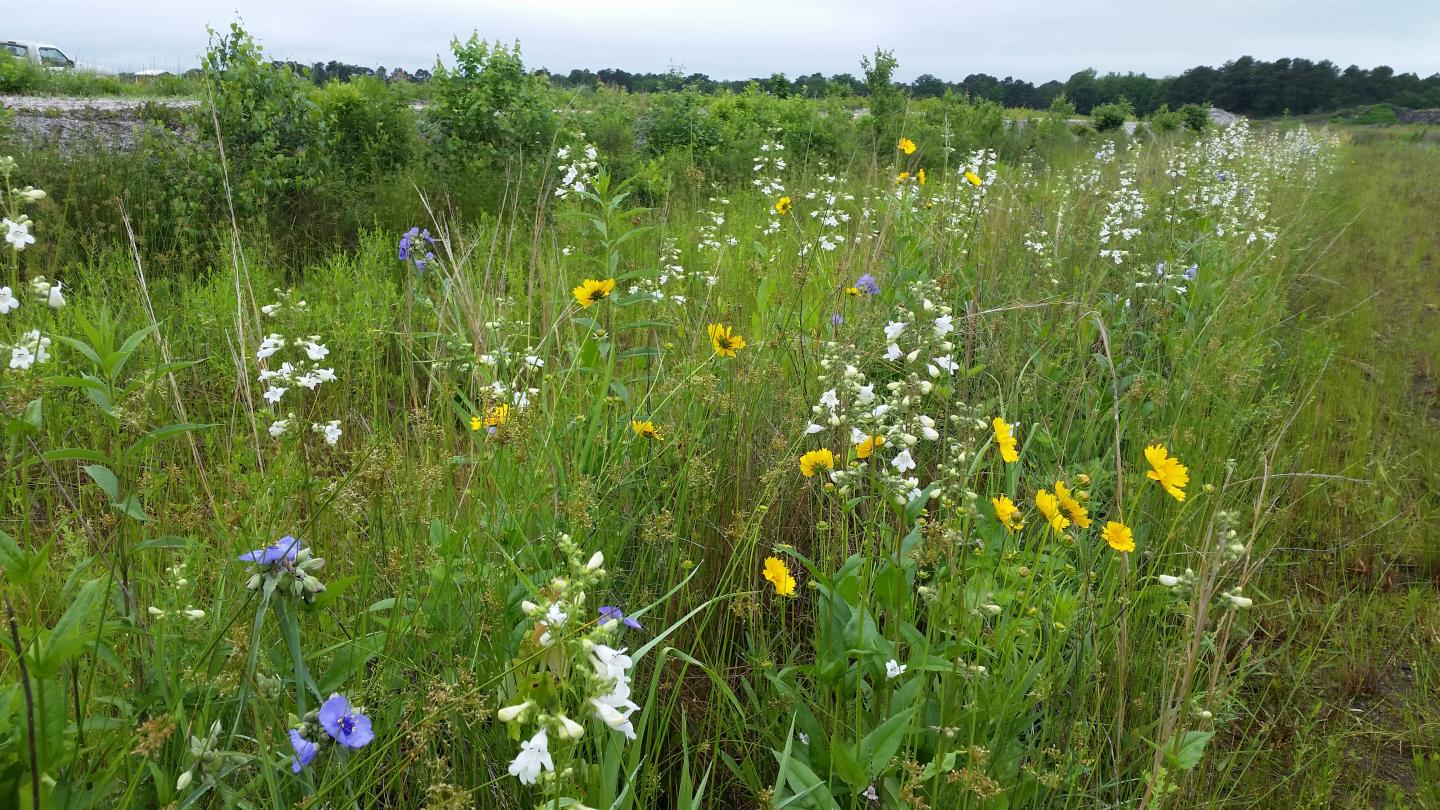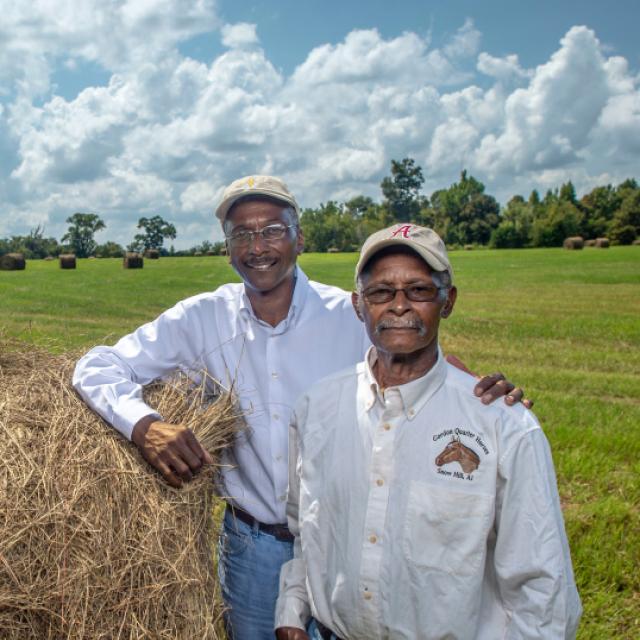
Our Conservation Stewardship Program (CSP) helps you build on your existing conservation efforts while strengthening your operation.
Your Stewardship Goals. Our Assistance.
Have you ever looked across your property and thought about some land management goals you would like to take to the next level? Maybe we can help. No one knows more about your land than you do, and no one knows more about conservation than we do. Together we can develop a plan tailored to your land and your goals to help you increase productivity and protect the value of your land.
Sustainable Production
CSP is for working lands. It is the largest conservation program in the United States with 70 million acres of productive agricultural and forest land enrolled in CSP. Thousands of people have made the choice to voluntarily enroll in the program because it helps them enhance natural resources and improve their business operation.
Some of the benefits include:
- Improved cattle gains per acre
- Increased crop yields
- Decreased inputs
- Wildlife population improvements
- Better resilience to weather extremes
Through CSP, we can help build your business while implementing conservation practices that help ensure the sustainability of your entire operation. Good land stewardship not only conserves the natural resources on your farm, ranch or forest, it also provides multiple benefits to local communities, including better water and air quality and wildlife habitat, as well as food and fiber.
How It Works
Our Conservation Stewardship Program (CSP) helps you build on your existing conservation efforts while strengthening your operation. Whether you are looking to improve grazing conditions, increase crop resiliency, or develop wildlife habitat, we can custom design a CSP plan to help you meet those goals. We can help you identify natural resource problems in your operation and provide technical and financial assistance to solve those problems or attain higher stewardship levels in an environmentally beneficial and cost-effective manner. If you are already taking steps to improve the condition of the land, chances are CSP can help you find new ways to meet your goals.
Eligibility
Eligible lands include private and Tribal agricultural lands, cropland, grassland, pastureland, rangeland and nonindustrial private forest land.
CSP is available to all producers, regardless of operation size or type of crops produced, in all 50 states, the District of Columbia and the Caribbean and Pacific Island areas.
Applicants may include individuals, legal entities, joint operations or Indian tribes.
Applicants must:
- Include all agricultural or private forest land in your operation that you will have effective control of for the 5 year term of the CSP contract.
- Establish farm records with the Farm Service Agency for these lands for your application to be evaluated meeting all HEL and Wetland conservation requirements.
- Be prepared to provide maps that identify all land in your operation to a NRCS representative. The maps will help you and NRCS determine the land that is eligible for enrollment, payment, and if you have one or more operations to offer for enrollment.

CSP Enhancements
For detailed information on implementation criteria and documentation requirements of specific enhancements, please visit the National CSP website.
Accepting Applications
CSP applications are accepted on a continuous basis, however, NRCS establishes application "cut-off" or submission deadline dates for evaluation, ranking and approval of eligible applications. CSP is open to all eligible agricultural producers and submitted applications may be considered or evaluated in multiple funding pool opportunities.
Plus state-wide pools:
- Beginning Farmer and Rancher (BFR)
- Socially Disadvantaged Farmer and Rancher (SDFR)
- Organic Producer
- Non-industrial Private Forestland (NIPF)
- NIPF General
- NIPF BFR
- NIPF SDFR
Agricultural Land Targeted Resource Concerns:
- Livestock Production Limitation
- Field Sediment, Nutrient, and Pathogen Loss
- Source Water Depletion
- Terrestrial Habitat
- Wind and Water Erosion
- Degraded Plant Condition
- Pest Pressure
- Soil Quality Limitation
- Concentrated Erosion
Non Industrial Private Forest Land - Available Statewide:
- Degraded Plant Condition
- Fire Management
- Pest Pressure
- Terrestrial Habitat
- Concentrated Erosion
- Field Sediment, Nutrient and Pathogen Loss
- Concentrated Erosion
- Wind and Water Erosion
Organic - Available Statewide:
- Degraded Plant Condition
- Pest Pressure
- Field Pesticide Loss
- Soil Quality Limitation
- Terrestrial Habitat
- Livestock Production Limitation
- Soil Quality Limitation
- Wind and Water Erosion
New CSP Grasslands Conservation Initiative

This new initiative will assist producers in protecting grazing land uses; conserving and improving soil, water and wildlife resources; and achieving related conservation values by conserving eligible land through grassland conservation contracts.
Eligible producers will have an opportunity to enroll in a five-year contract. By signing the contract, producers agree to meet or exceed the stewardship threshold for one priority resource concern by the end of the five-year contract. NRCS will make payments for the initiative at a rate of $18 per acre each year not to exceed the base acres enrolled in a contract. USDA will notify producers who are eligible to enroll.

Download the Nebraska payment schedules to see which activities qualify, and how much financial assistance is available.
Ready to get started?
Contact your local service center to start your application.
How to Get Assistance
Do you farm or ranch and want to make improvements to the land that you own or lease?
Natural Resources Conservation Service offers technical and financial assistance to help farmers, ranchers and forest landowners.

To get started with NRCS, we recommend you stop by your local NRCS field office. We’ll discuss your vision for your land.
NRCS provides landowners with free technical assistance, or advice, for their land. Common technical assistance includes: resource assessment, practice design and resource monitoring. Your conservation planner will help you determine if financial assistance is right for you.
We’ll walk you through the application process. To get started on applying for financial assistance, we’ll work with you:
- To fill out an AD 1026, which ensures a conservation plan is in place before lands with highly erodible soils are farmed. It also ensures that identified wetland areas are protected.
- To meet other eligibility certifications.
Once complete, we’ll work with you on the application, or CPA 1200.
Applications for most programs are accepted on a continuous basis, but they’re considered for funding in different ranking periods. Be sure to ask your local NRCS district conservationist about the deadline for the ranking period to ensure you turn in your application in time.
As part of the application process, we’ll check to see if you are eligible. To do this, you’ll need to bring:
- An official tax ID (Social Security number or an employer ID)
- A property deed or lease agreement to show you have control of the property; and
- A farm number.
If you don’t have a farm number, you can get one from USDA’s Farm Service Agency. Typically, the local FSA office is located in the same building as the local NRCS office. You only need a farm number if you’re interested in financial assistance.
NRCS will take a look at the applications and rank them according to local resource concerns, the amount of conservation benefits the work will provide and the needs of applicants. View Application Ranking Dates by State.
If you’re selected, you can choose whether to sign the contract for the work to be done.
Once you sign the contract, you’ll be provided standards and specifications for completing the practice or practices, and then you will have a specified amount of time to implement. Once the work is implemented and inspected, you’ll be paid the rate of compensation for the work if it meets NRCS standards and specifications.

